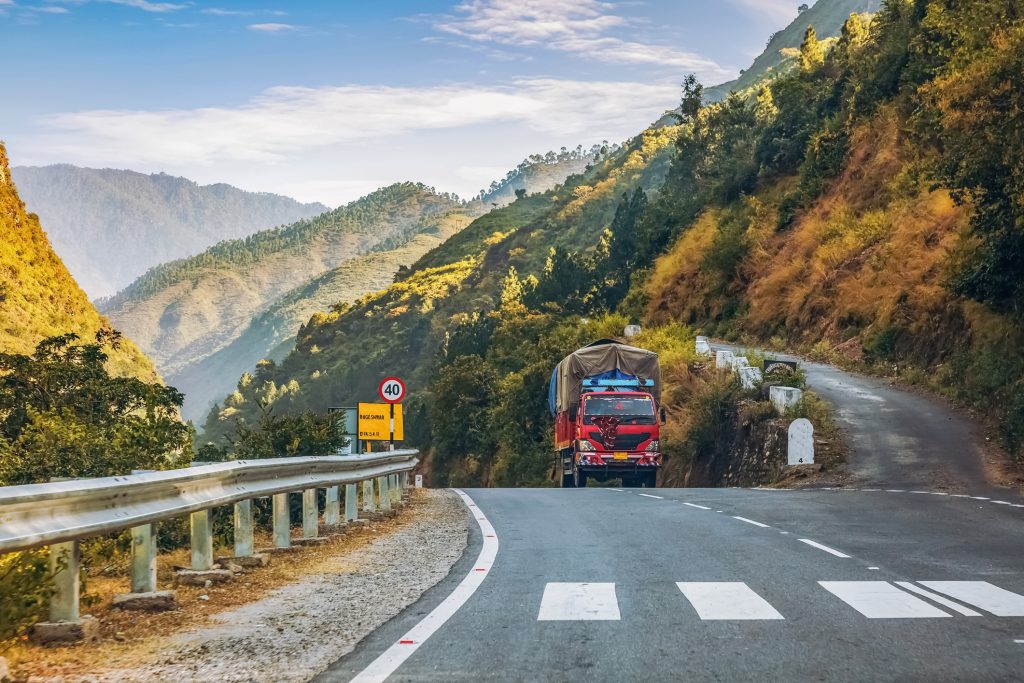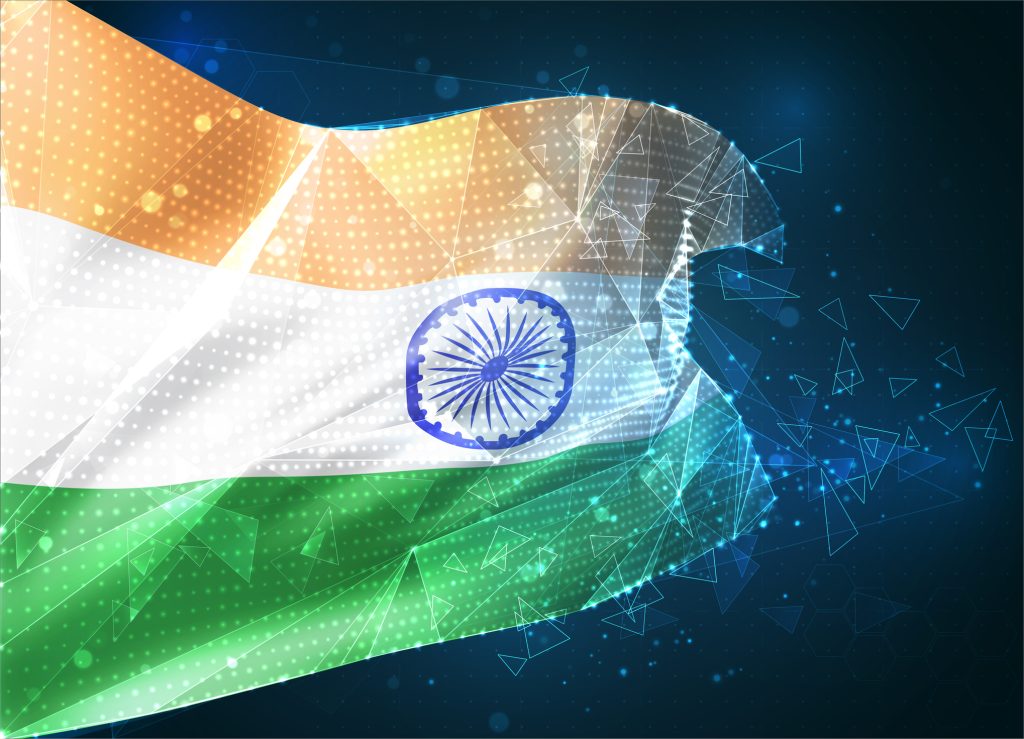
- Resources
- Blog
eSIMs for India’s Vehicle Location Tracking
About MoRTH-mandated AIS-140 Vehicle Location Tracking
In recent years, India has witnessed a significant transformation in the realm of vehicle tracking and management, primarily due to the implementation of the AIS-140 (Automotive Industry Standard 140) requirement mandated by the Ministry of Road Transport and Highways and the Insurance Regulatory and Development Authority of India. This regulation has revolutionized how to track vehicle location in the country, making it essential for companies to adopt advanced technologies that ensure compliance while enhancing operational efficiency.
One such technology gaining momentum in this domain is eSIM (embedded SIM) or eUICC (embedded Universal Integrated Circuit Card). These technologies offer numerous benefits to companies operating in India, providing them with the flexibility, cost-efficiency, and freedom to choose from a variety of vendors. In this article, we will explore why eSIM technology is essential for Indian companies to thrive in the AIS-140 landscape and how Kigen, a fast mover in the eSIM ecosystem, is catalyzing India’s growth.
Context in numbers: eSIMs growth for Vehicle Location Tracking and Telematics in India
In India, more than fifty percent of the population uses public transport daily. The safety and security of vehicles and passengers on Indian roads is the central component of India’s growth and digitalization for Intelligent Mobility. Vehicle and passenger route data, movements, and frequency allow for better transit management and emergency response across the vast range of Inner city, inter-city, and highway/longer route transport.
- Juniper Research forecasts the value of the global e-SIM market will increase from $4.7 billion in 2023 to $16.3 billion by 2027. Further, IoT connections will outpace smartphone eSIM growth by 2026. (March, 2023)
- Although device shipments and projections are sound indicators, eSIM profile downloads show real activity – encouraging estimates from Trusted Connectivity Alliance show that IoT/M2M eSIM downloads increased by 148% in 2022. (April, 2023)
- Counterpoint Technology and Research projects telematics device shipments to reach to 50 million units in 2030 at a CAGR of 31% from 2021. (November, 2022)
- Telematics device revenues will climb to ₹175 billion in 2030 at a CAGR of 21% from 2021 (November, 2022)
What is the significance of AIS-140 in India, and how is it developing?
The AIS-140 mandate, issued by the Ministry of Road Transport and Highways, aims to enhance the safety and security of vehicles on Indian roads. eSIM-enabled telematics are also mandated for the Insurance Regulatory and Development Authority of India (IRDAI) directive for insurance companies as well as fleet management companies across India. This regulation requires all commercial vehicles to be equipped with a vehicle location tracking device, an emergency button, and a one-way communication system, among other specifications as per below:
- eUICC Compliance: The tracking devices used for AIS-140 compliance should be equipped with embedded SIM (eUICC) cards to enable secure connectivity and remote provisioning.
- Real-Time Location Tracking: The tracking device should be capable of real-time vehicle location tracking and reporting. It should provide accurate information about the vehicle’s current position, speed, and direction.
- Emergency Button: The device should be equipped with an emergency button, which, when activated, sends an immediate alert to a predefined emergency contact or control center. This feature is crucial for passenger safety and quick response in case of emergencies.
- Two-Way Communication: The tracking device should support two-way communication, allowing authorities or the control center to establish communication with the vehicle and its passengers if necessary.
- Data Storage: The device should have storage capabilities to record and store location and event data for a specified period. This data may be used for analysis, compliance, and post-incident investigations.
- Tamper Detection: The device should be designed to detect any tampering attempts, such as removal or disconnection, and report such incidents to the control center.
- Over-the-Air (OTA) Updates: The eUICC should support remote provisioning and over-the-air updates to ensure it can be configured or updated without physically accessing the SIM card. This feature is essential for compliance with changing regulations.
- Secure Communication: The eUICC should support secure communication protocols to protect the data transmitted between the tracking device and the control center.
- Compliance with Local Regulations: The eUICC should comply with local telecommunications and regulatory standards and requirements, which may vary in different states and union territories, including any updates or changes in AIS-140 regulations.
The primary objective of AIS-140 is to ensure real-time tracking of commercial vehicles, making it easier to respond to emergencies, reduce accidents, and enhance the overall efficiency of the transport system. However, to achieve these goals, companies must leverage cutting-edge technology that can provide a seamless, cost-effective, and versatile solution.



Newsletter Sign-up// – Light Gray Inline
Sign-up for our newsletter to receive the latest from Kigen.
Why are eSIMs a game-changer for vehicle location tracking for India?
eSIM technology, or embedded SIMs, are designed to replace traditional physical SIM cards in connected devices. These eSIMs are soldered onto a device’s motherboard, making them a perfect fit for the AIS-140 requirements, especially in the Indian context. Here’s why eSIM is essential for Indian companies to achieve flexWhy eSIM and iSIM are the enablers of flexible, remote, secure IoT scaleibility, cost-efficiency, and vendor choice:
1. Flexibility in Compliance: One of the key advantages of eSIM technology is its flexibility. Unlike physical SIM cards, eSIMs can be remotely updated enabling swift and efficient updates and compliance with evolving regulations. In the dynamic landscape of the AIS-140 requirement, this flexibility is crucial for companies, as it allows them to adapt quickly to changing standards and stay on the right side of the law.
Example Scenario 1: Imagine a fleet management company that operates in multiple Indian states, each with slightly different AIS-140 compliance certifications. With eSIM technology, this company can easily adjust its tracking devices to meet the specific requirements of each region without physically replacing SIM cards, thereby reducing downtime and ensuring continued compliance.
2. Cost-Efficiency: Cost-effectiveness is a major concern for companies, especially in a price-consciousconscious market like India. eSIM technology offers significant cost savings by eliminating the need for physical SIM cards, which can be expensive to distribute, install, replace, and maintain. Additionally, eSIMs enable remote diagnostics and troubleshooting, reducing the need for costly on-site technical support.
Example Scenario 2: A logistics company with a large fleet of vehicles can significantly cut operational costs by remotely managing and updating eSIMs on its tracking devices. This eliminates the need for physical maintenance and minimizes downtime, resulting in substantial cost savings over time.
3. Choice of Different Vendors: Another essential benefit of eSIM technology is easily switching between multiple vendors. Companies are not tied to a single network provider, giving them the freedom to choose the most cost-effective and reliable connectivity option.
Example Scenario 3: An India-based e-commerce company that relies on various vehicle tracking solutions can now choose from different vendors to optimize their tracking services based on performance and cost. eSIMs allow them to switch between vendors seamlessly without replacing SIM cards.
4. Ease of deployment: India has multiple telecom circles and local regulations to cater to. Giving OEMs and service providers the ability to build with one SKU brings cost benefits and operational efficiencies.
Example scenario 4: A device manufacturer wants to support intra-city and inter-state tracking with last-mile delivery updates for improved experience. For optimal performance, the device needs to hop multiple telecom circles in a compact footprint and also be cost-effective to operate. Using MFF2 eUICC in the device allows it to meet its desired physical characteristics. Typically, OTA-based MFF2 solutions may only allow switching between two profiles, falling short in some regions. Instead, an RSP-capable solution can increase the number of profiles to achieve the best-quality coverage.
Kigen: Deep eSIM expertise for India’s growth
These include:
- Compliance with AIS-140 Standards: eUICC manufacturing must comply with the standards and specifications outlined in AIS-140 regulations.
- Secure Manufacturing and Personalization: Security is of utmost importance in eUICC manufacturing. The entire process, from the production of the physical card to personalization with the necessary subscriber information, should be conducted in a secure environment. This includes the use of secure facilities, tamper-evident packaging, and secure data handling.
- Data Privacy and Encryption: eUICC cards should incorporate robust encryption techniques to protect the subscriber data. This data should be securely stored and transmitted during manufacturing and personalization processes. This goes hand in hand with the requirements from Telecom Regulatory Authority of India (TRAI) and Department of Telecommunications (DoT) for subscriber data to be handled within India.
- End to End security: Kigen has been developing the GSMA IoT SAFE standard collaboratively and is making this widely available to MNOs and OEMs alike with it’s eSIM secure Operating System (OS) to support chip-to-cloud security, ideally suited for tracking applications.
- Remote Provisioning Capabilities: eUICC cards must support remote provisioning over-the-air through GSMA-accredited facilities in India. In technical terms, OTA is a starting point, and for a more future-proof solution, the eUICC should take advantage of Remote SIM Provisioning
- Integration with Tracking Devices: eUICC chipsets need to be able to serve the vast range of various tracking devices across multiple price points and compliance to industrial, automotive or consumer grades eSIMs and hence, available in the broadest range of compliant chipsets.
- Tamper Detection and Resistance: Manufacturing should incorporate tamper detection features into the eUICC to detect any physical tampering attempts. Additionally, eUICC cards should be designed to be tamper-resistant.
- Quality Control and Testing: Rigorous quality control and testing processes should be in place to verify the functionality and reliability of each eUICC card at the factories. This includes testing for proper communication, encryption, and data storage capabilities.
- Supply Chain Security: The entire supply chain for eUICC cards, from manufacturing to distribution, should be secure and closely monitored to prevent unauthorized access or tampering.
- Compliance with Local Regulations: Manufacturing facilities must comply and keep up with the evolving local telecommunications and regulatory standards. Working with trusted partners, connecting across the network operators, and tracking device manufacturers is an advantage.
- Scalability: Manufacturers should be able to scale production to meet the demands of the Indian market, which is continually evolving and expanding.
- Partnerships and Certifications: Ensure that the quality and security of eUICC manufacturing with an eUICC OS that can meet certifications such as EAL (Evaluation Assurance Level), Global Platform for interoperable deployment of applications on secure chip technology, EMVCo for interoperability with payment systems and other secure applications and more.
Kigen’s commitment to this market is evident in its partnerships with local and international businesses, aiming to create a thriving eSIM ecosystem in India. By offering cutting-edge eSIM technology, Kigen empowers Indian companies with the tools they need to meet AIS-140 compliance while maximizing flexibility, cost-efficiency, and vendor choice.
Driving forward together (SIM, eSIM, iSIM journey)
The AIS-140 requirement has brought about a significant shift in India’s vehicle tracking landscape. To thrive in this rapidly evolving regulatory environment, Indian companies must adopt advanced technologies that offer flexibility, cost-efficiency, and the freedom to choose from different vendors. eSIM technology stands out as a game-changer in this context, providing companies with the means to meet compliance requirements while minimizing operational costs.
Kigen’s pioneering role in the eSIM ecosystem for India cannot be overlooked. The company’s commitment to innovation and collaboration is accelerating the growth of eSIM technology in the country, making it an essential partner for businesses aiming to excel in the AIS-140 era.
With eSIM technology and Kigen’s support, India’s vehicle tracking and management industry is poised for a future of enhanced efficiency and compliance.
The stage is set for new OEMs and ODMs to rise to support India’s growth. This is indicated by the high demand seen in customers who seek design-level integration of Kigen eSIM technology into their product sets. M2M IoT devices require chipset-agnostic, single SKU products, which can efficiently manage their inventory flow and field activations. Kigen is closely working with such partners and enabling iSIM-enabled products for the Industry requirements. We take along our OEM, ODMs, and MNOs to the forefront of this new business evolution.
Meet our eSIM solutions experts
Discuss your needs today with our experts available to ease your eSIM journey to win in the vehicle location tracking market.






